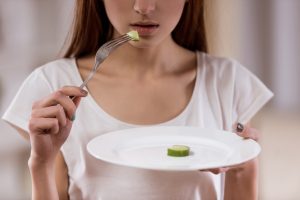As an allied health profession that was only introduced in the 20th century, Occupational Therapy is relatively new and highly evolving. The common knowledge is that occupational therapy is part of the rehabilitation team that works alongside physical therapists and speech therapists. Physical therapy helps with mobility while speech therapy addresses language and communication concerns. But what exactly is Occupational Therapy and who can benefit from it? In the month of April, let’s celebrate and find out more about this rapidly evolving profession!
“Occupational” Therapy
Occupational therapy does not only deal with “occupations” or “jobs”. Occupation is defined as anything that occupies one’s day or time. This basically includes all activities that a person does, including sleeping. Those tasks can be as routine as taking a bath, watering plants, driving, or lining up in a train station. In children, there is playing and writing. It can also be unique to some individuals and professionals, like an athlete training for a swim meet or playing the piano.
When do occupational therapists help?
Imagine a chef that can no longer cook, a mother that cannot tend to her children’s needs, or a student who is having trouble making friends in school. An occupational therapist helps in regaining all kinds of functions, and in teaching skills used in both the mundane tasks and extraordinary events of life.
Who can benefit from occupational therapy?
If there is a certain task, activity, or role that the person cannot fulfill independently or successfully, then he/she can benefit from occupational therapy. The approach is not exactly diagnosis-based. To give a picture, the following are the common conditions or diagnosis that usually warrant occupational therapy services:
Paediatric cases:
- Global Developmental Delay (GDD)
- Intellectual Disability (ID)
- Attention-Deficit/Hyperactivity Disorder (ADHD)
- Autism Spectrum Disorder (ASD)
- Cerebral Palsy (CP)
- Down Syndrome (DS)
Adult cases:
- Stroke
- Traumatic Brain Injury (TBI)
- Multiple Sclerosis
- Parkinson’s Disease (PD)
- Hip or knee replacements
- Arthritis
- Carpal Tunnel Syndrome
- Dementia
- COVID-19
Psychiatric cases:
- Depression
- Anxiety
- Bipolar Disorder
- Schizophrenia
What is the management given by OTs?
OTs use therapeutic activities to regain functions and learn skills. They are guided by theories and techniques but treatment is always individualised. The activities may seem very ordinary and easy, but it is always rooted in science and evidence-based practice, coupled with creativity in order to meet the client’s interest, goals, and strengths. Some examples are:
- Behavioral management
- Sensory integration
- Executive function / cognitive exercises
- Environmental modification
- Ergonomic assessment
- Improvement of habits and routine
- Exercises and splinting
- Family education
- Social skills training
- Hand skills training
- Self-care and adaptive skills training
What is the goal of occupational therapy?
The goal of therapy highly depends on the client or patient. In general, lost skills are relearned or new skills are learned in order to function optimally at home and in the community. These are the areas of occupations that are evaluated and managed:
- Activities of daily living (self-care tasks)
- Instrumental activities of daily living (community-related tasks like managing money, transportation, taking care of a pet, home maintenance)
- Work (employment, volunteering, retirement)
- Education (formal and informal education)
- Leisure (for adults)










